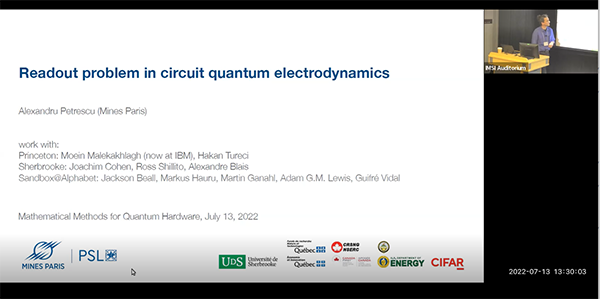Readout problem in circuit QED
Presenter
July 13, 2022
Abstract
In typical circuit quantum electrodynamics experiments, the quantum state of a superconducting qubit is measured by monitoring a readout resonator weakly and off-resonantly coupled to the qubit. As drive power is increased to achieve a higher-fidelity and faster measurement, unwanted transitions occur, which, for example, decrease the qubit’s energy relaxation time T1. In this talk, we focus on transmon qubits, and we present a time-dependent Schrieffer-Wolff perturbation theory that allows us to catalog nonlinear relaxation processes, and identify stimulated emission as one possible mechanism for spurious qubit relaxation during readout [1]. Turning to numerical techniques, we address the related phenomenon of escape into unconfined states [2,3], and discuss a second mechanism for rate enhancement during measurement: by interactions between the states defining the qubit subspace, and higher-energy chaotic states within the Floquet spectrum. [1] A. Petrescu, M. Malekakhlagh, and H. E. T ̈ureci, Phys. Rev. B 101, 134510 (2020). [2] L. Verney, R. Lescanne, M. H. Devoret, Z. Leghtas, and M. Mirrahimi, Phys. Rev. Applied 11, 024003 (2019) [3] R. Shillito, A. Petrescu, J. Cohen, J. Beall, M. Hauru, M. Ganahl, A. G. M. Lewis, G. Vidal, and A. Blais, “Dynamics of transmon ionization” arXiv: 2203.11235 (2022).
